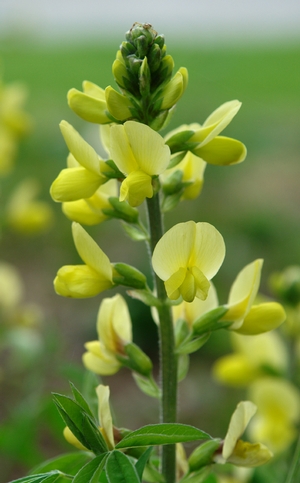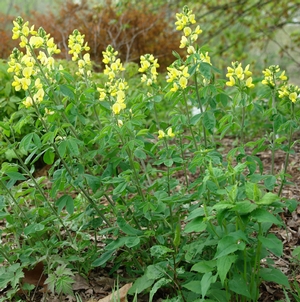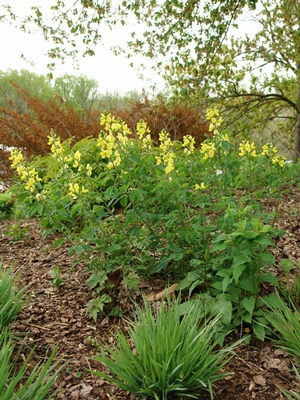Thermopsis villosa
Common: Carolina LupineThermopsis caroliniana LP50 - 50 per flat
- Height: 3'-4'
- Spread: 2'-3'
- Spacing: 18"
- Hardiness Zone(s): 5-8


Thermopsis caroliniana LP50 - 50 per flat



Clump-forming perennial with dense spikes of sulphur yellow in June resemble Baptista or lupines. Clean, compound foliage is attractive late into the season. Very durable and long lived once established. Beautiful cut flower.
Thermopsis caroliniana is a wonderful plant for the gardener that has always lusted for the western lupine but has the heat and humidity of the southeast. It is best used in large groupings in borders, meadows, cut flower gardens, and wildflower gardens. Like Baptisia, it can take up to three years to get fully established and does not like to be crowded in a planting design.
Prefers average, well-drained soils in full sun. Heat and drought tolerant. Propagate by seed or spring division. Cut back foliage approximately a month after flowering. Most attractive when mass planted.
Thermopsis caroliniana is a clump-forming perennial with dense spikes of Sulphur-yellow pea-like blooms in June, resembling Baptisia or its beloved cousin, lupines. Much easier to grow in most gardens than a true lupine, the clean compound foliage of the Carolina lupine is attractive late into the season. It can grow 3-5’ tall and 3-4’ wide and is very durable and long lived once established. T. caroliniana is glorious blooming en masse long after Baptisia blooms have faded and is uncommon to find in the garden.
T. caroliniana is native to the North Carolina Mountains, but can also be found growing in the Piedmont or coastal plains in forest and mountain clearings. It prefers average, well-drained soils in full sun. Carolina lupine is heat and drought tolerant and is unbothered by disease and pests. If the foliage begins to look weary in the high summer or to encourage a fall rebloom, flowers may be deadheaded or the plant may be cut back a month after flowering to encourage a second flush. It can be propagated by seed or spring division. A word of caution, while dividing the plant is possible, the thick root system does make it challenging and a machete or a hatchet may be the best tool for the job.